News
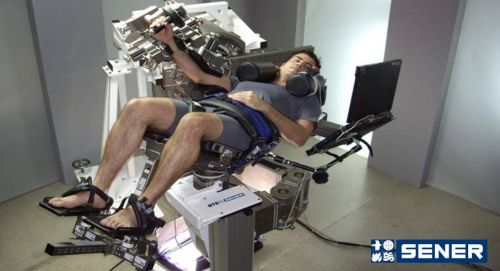
06/09/2017
Thanks to MARES, SENER takes care of the physical well-being of the astronauts
Thanks to MARES, SENER takes care of the physical well-being of the astronauts
People who have already had the opportunity to come to the Catalan headquarters of the SENER engineering company settled in the Barcelona Synchrotron Park were able to discover in the foyer an odd scientific facility similar to a sophisticated weight machine.
This machine is the MARES scientific instrument (Muscle Atrophy Research and Exercise System), which was designed and manufactured by a group of experts from SENER who specialize in space life support systems. This system makes it possible to research the consequences of zero gravity on human muscles, which include muscle atrophy, loss of strength, osteoporosis, and effects on neuromuscular interaction.
MARES is a scientific device of the European Space Agency that is integrated into the Columbus module of the International Space Station, and which is part of NASA’s Human Research Facility space laboratory.
MARES is currently used in the new SARCOLAB experiment carried out in the space station that consists of electrically stimulating and measuring the knee and ankle muscles using the scientific instrument developed by SENER. As a result of the success of the first two sessions conducted by the French astronaut Thomas Pesquet, it has been scheduled to be repeated on two more astronauts this year, one European and one Russian.
This machine is the MARES scientific instrument (Muscle Atrophy Research and Exercise System), which was designed and manufactured by a group of experts from SENER who specialize in space life support systems. This system makes it possible to research the consequences of zero gravity on human muscles, which include muscle atrophy, loss of strength, osteoporosis, and effects on neuromuscular interaction.
MARES is a scientific device of the European Space Agency that is integrated into the Columbus module of the International Space Station, and which is part of NASA’s Human Research Facility space laboratory.
MARES is currently used in the new SARCOLAB experiment carried out in the space station that consists of electrically stimulating and measuring the knee and ankle muscles using the scientific instrument developed by SENER. As a result of the success of the first two sessions conducted by the French astronaut Thomas Pesquet, it has been scheduled to be repeated on two more astronauts this year, one European and one Russian.
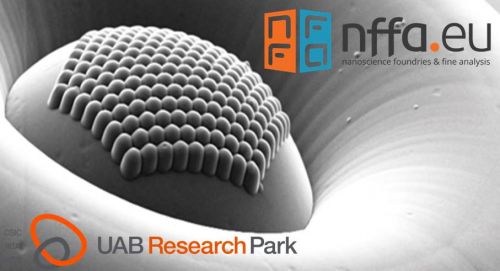
30/08/2017
The Nanoworld Is Designed and Observed In and Nearby Barcelona Synchrotron Park
The Nanoworld Is Designed and Observed In and Nearby Barcelona Synchrotron Park
NFFA stands for Nanoscience Foundries and Fine Analysis. It is a new scientific infrastructure distributed across Europe created last year that offers researchers and companies a free access to a wide range of tools to perform growth, nano-lithography, nano-characterization, theory and simulation and fine-analysis with synchrotron, FEL and neutron radiation sources.
This network gathers 15 centers from 8 different countries and the UAB campus, the Barcelona Synchrotron Park strategic partner, is one of them. More specifically, the Institute of Material Science of Barcelona (ICMAB), the Catalan Institute of Nanoscience and Nanotechnology (ICN2), the Institute of Microelectronics of Barcelona and ALBA synchrotron are involved in the NFFA initiative. The program is coordinated in Barcelona by the UAB research park (PRUAB) and ICN2.
A year and a half on, up to 165 proposals were received. These proposals came from 28 countries, mostly from Europe but including as well 5 Third Countries (India, Russia, USA, Japan and Chile). Of all the applications, 103 have been accepted and have been assigned the most appropriate installation for the development of their project, always from a country other than that of their research group (10% of the proposals were closely linked to industrial users). Of these 103 projects, 10 have used the facilities of the research centers of the UAB campus.
This network gathers 15 centers from 8 different countries and the UAB campus, the Barcelona Synchrotron Park strategic partner, is one of them. More specifically, the Institute of Material Science of Barcelona (ICMAB), the Catalan Institute of Nanoscience and Nanotechnology (ICN2), the Institute of Microelectronics of Barcelona and ALBA synchrotron are involved in the NFFA initiative. The program is coordinated in Barcelona by the UAB research park (PRUAB) and ICN2.
A year and a half on, up to 165 proposals were received. These proposals came from 28 countries, mostly from Europe but including as well 5 Third Countries (India, Russia, USA, Japan and Chile). Of all the applications, 103 have been accepted and have been assigned the most appropriate installation for the development of their project, always from a country other than that of their research group (10% of the proposals were closely linked to industrial users). Of these 103 projects, 10 have used the facilities of the research centers of the UAB campus.
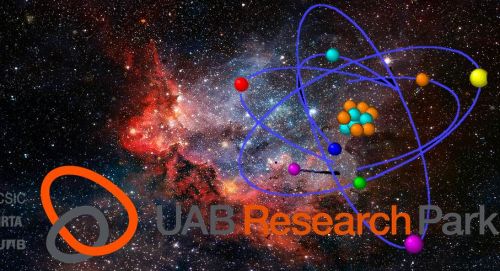
26/07/2017
The UAB Research Park: from the infinitely small to the infinitely big
The UAB Research Park: from the infinitely small to the infinitely big
The UAB Research Park (PRUAB), of which the Barcelona Synchrotron Park is a partner and sponsor of the ideas generation program, offers this month news related to two of its research centers working at both ends of the scale of dimensions: the Catalan Institute of Nanoscience and Nanotechnology (ICN2) and the Institute of High Energy Physics (IFAE).
The infinitely small
A research team led by Jordi Sort, ICREA Research Professor and Lecturer of the Department of Physics at the Universitat Autònoma de Barcelona, with the collaboration of the Catalan Institute for Nanoscience and Nanotechnology (ICN2), has developed a nanoporous material based on a copper-nickel alloy, with a structure similar to that of a sponge, but with a separation between pores (i.e., thickness of the pore walls) of only 5 or 10 nanometres. In other words, the walls of the pores contain room for only a few dozens of atoms: this new material allows handling and storing information using very low energy.
“This represents a new paradigm in the energy saving of computers and in computing and handling magnetic data in general”, says Jordi Sort.
The infinitely big
This month, the IFAE celebrates its anniversary: 25 years exploring the cosmic and high energy frontiers, in order to solve fundamental questions about the universe that still have no answer. The main lines of research, both experimental and theoretical, are particle physics, high energy astrophysics and cosmology. But technological innovation is also present in IFAE in applied physics projects: development of new instrumentation, such as detectors or telescope chambers, medical applications projects, such as new medical imaging systems, and mass data management solutions.
The infinitely small
A research team led by Jordi Sort, ICREA Research Professor and Lecturer of the Department of Physics at the Universitat Autònoma de Barcelona, with the collaboration of the Catalan Institute for Nanoscience and Nanotechnology (ICN2), has developed a nanoporous material based on a copper-nickel alloy, with a structure similar to that of a sponge, but with a separation between pores (i.e., thickness of the pore walls) of only 5 or 10 nanometres. In other words, the walls of the pores contain room for only a few dozens of atoms: this new material allows handling and storing information using very low energy.
“This represents a new paradigm in the energy saving of computers and in computing and handling magnetic data in general”, says Jordi Sort.
The infinitely big
This month, the IFAE celebrates its anniversary: 25 years exploring the cosmic and high energy frontiers, in order to solve fundamental questions about the universe that still have no answer. The main lines of research, both experimental and theoretical, are particle physics, high energy astrophysics and cosmology. But technological innovation is also present in IFAE in applied physics projects: development of new instrumentation, such as detectors or telescope chambers, medical applications projects, such as new medical imaging systems, and mass data management solutions.
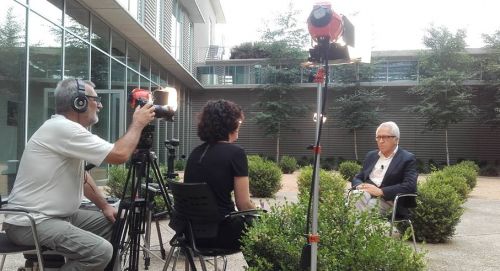
19/07/2017
Barcelona Synchrotron Park’s key value: the environment
Barcelona Synchrotron Park’s key value: the environment
The Barcelona Synchrotron Park dedicates 640,000 sqm of land to hosting worldwide innovative companies around the ALBA synchrotron, the largest science facility in south-west Europe.
Beyond the high standard infrastructures offered by the BSP (polygeneration power plant, seven telecom operators with their own fibre optic networks, various Data Centres, etc.), the environment is certainly BSP’s key value:
This environment is definitely the environment of ÀmbitB30, the name of the association that gathers the 23 municipalities that make up the territory where the Barcelona Synchrotron Park is located.
In order to make known the important economic potential of the ÀmbitB30 territory where R&D and innovation play a key role, the local public television, Vallès Visió, is preparing a series of reports for the fall: last Friday, BSP’s director Pere Solà was interviewed in the park’s offices located in the Catalan headquarters of the SENER multinational engineering company installed in the park since 2013.
Beyond the high standard infrastructures offered by the BSP (polygeneration power plant, seven telecom operators with their own fibre optic networks, various Data Centres, etc.), the environment is certainly BSP’s key value:
- A training and research environment with the UAB University next to the park, one of the best Spanish universities (43,000 students, 3,500 researchers, 27 research centres) and ESADE, one of the best business schools in Europe.
- An innovation environment with the Eurecat technology centre in the Vallès Technology Park, business incubators in the UAB Research Park (PRUAB) and the ESADE Creapolis centre, etc.
- A business environment with a dense industrial fabric of more than 30,000 companies in the BSP surrounding cities, 50% of which are exporting ones.
This environment is definitely the environment of ÀmbitB30, the name of the association that gathers the 23 municipalities that make up the territory where the Barcelona Synchrotron Park is located.
In order to make known the important economic potential of the ÀmbitB30 territory where R&D and innovation play a key role, the local public television, Vallès Visió, is preparing a series of reports for the fall: last Friday, BSP’s director Pere Solà was interviewed in the park’s offices located in the Catalan headquarters of the SENER multinational engineering company installed in the park since 2013.
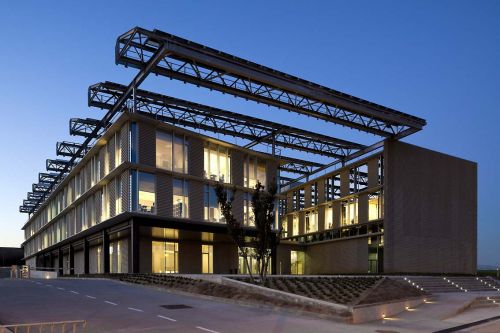
13/07/2017
SENER, 50 Years In Space!
SENER, 50 Years In Space!
Last week in Madrid, the SENER international engineering and technology group with Catalan headquarters in the Barcelona Synchrotron Park (image) celebrates its 50th year working in space. The launchers tower project in Kiruna, Sweden, was the first Space project that was tendered for in Spain, and it was SENER that did it, in 1967. This project clearly heralded starting point for SENER’s career in the space sector.
Since then, SENER currently had about 300 devices and subsystems in different satellites and space vehicles for agencies from the US (NASA), Europe (ESA), Japan (JAXA) and Russia (Roscosmos). Among the more recent projects, some famous missions can be mentioned: Rosetta (2004), Herschel & Planck (2009), Curiosity (2011), Gaia (2013), LISA Pathfinder (2015) or ExoMars 2020.
In the 4 worldwide centers where SENER carries out its space projects (BSP in Barcelona, Bilbao and Madrid, Spain, and Warsaw, Poland), SENER provides engineering and production services in electromechanical components and systems, guidance, navigation and control, and attitude and orbit control systems, optical system and microgravity and life support systems.
Regarding SENER future, Space and Defense director Diego Rodríguez said in an interview that “our mission now is to continue to supply subsystems for the flight segment while aiming for other areas, such as launchers, and branching out to projects with a lower institutional profile and a clear commercial focus”.
Congratulations!
Image: SENER's Catalan headquarters in the Barcelona Synchrotron Park
Since then, SENER currently had about 300 devices and subsystems in different satellites and space vehicles for agencies from the US (NASA), Europe (ESA), Japan (JAXA) and Russia (Roscosmos). Among the more recent projects, some famous missions can be mentioned: Rosetta (2004), Herschel & Planck (2009), Curiosity (2011), Gaia (2013), LISA Pathfinder (2015) or ExoMars 2020.
In the 4 worldwide centers where SENER carries out its space projects (BSP in Barcelona, Bilbao and Madrid, Spain, and Warsaw, Poland), SENER provides engineering and production services in electromechanical components and systems, guidance, navigation and control, and attitude and orbit control systems, optical system and microgravity and life support systems.
Regarding SENER future, Space and Defense director Diego Rodríguez said in an interview that “our mission now is to continue to supply subsystems for the flight segment while aiming for other areas, such as launchers, and branching out to projects with a lower institutional profile and a clear commercial focus”.
Congratulations!
Image: SENER's Catalan headquarters in the Barcelona Synchrotron Park
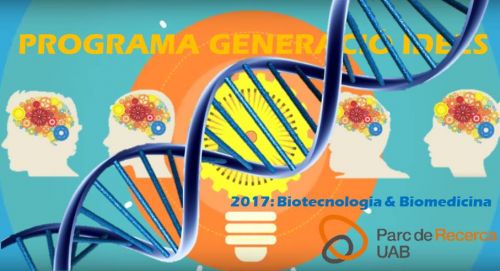
04/07/2017
Barcelona Synchrotron Park Sponsors the Sixth Ideas Generation Program
Barcelona Synchrotron Park Sponsors the Sixth Ideas Generation Program
The Ideas Generation Program organized by PRUAB, the UAB University research park, is an original initiative supported by Barcelona Synchrotron Park that sponsors the top prize: every year, it aims at offering companies the benefit of the UAB researchers’ wealth of creativity to get proposals to their technological challenges.
This program (video in Catalan here) is based on: 1) Collecting technology challenges posed by local companies from a given sector, 2) Inspiring solutions from the UAB scientific community, 3) Training researchers to help them make their proposal a reality (assessment to elaborate a business plan, create a start-up etc.), 4) Evaluating these projects by experts, 5) Rewarding the best projects.
In the last five editions focused on ICT technologies, biotechnologies, environment, aerospace and culture sectors, respectively, 60 projects have been generated and 9 of them have been transformed into currently operative companies that could get a global amount of 1 million euros founds.
Barcelona Synchrotron Park supports this initiative that helps the economic development of the local territory and sponsors the sixth program, which this year is devoted to the biotechnology industry and biomedicine. This new edition starts now and will conclude on November 30 with the awards ceremony.
This program (video in Catalan here) is based on: 1) Collecting technology challenges posed by local companies from a given sector, 2) Inspiring solutions from the UAB scientific community, 3) Training researchers to help them make their proposal a reality (assessment to elaborate a business plan, create a start-up etc.), 4) Evaluating these projects by experts, 5) Rewarding the best projects.
In the last five editions focused on ICT technologies, biotechnologies, environment, aerospace and culture sectors, respectively, 60 projects have been generated and 9 of them have been transformed into currently operative companies that could get a global amount of 1 million euros founds.
Barcelona Synchrotron Park supports this initiative that helps the economic development of the local territory and sponsors the sixth program, which this year is devoted to the biotechnology industry and biomedicine. This new edition starts now and will conclude on November 30 with the awards ceremony.









